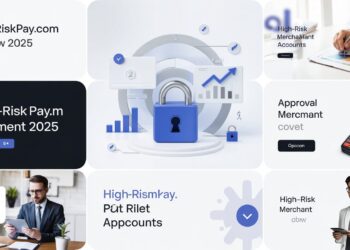As the United States continues to position itself as a global hub for innovation and entrepreneurship, recent updates to the International Entrepreneur Rule (IER) have garnered renewed attention. For aspiring international founders, understanding the evolving landscape is more crucial than ever. This article offers a comprehensive look at the latest international entrepreneur rule news, including policy changes, eligibility criteria, application procedures, and expert perspectives. Whether you’re planning to launch a tech startup or bring a high-growth business idea to the U.S., this guide will help you navigate the complexities of the IER.
Understanding the International Entrepreneur Rule (IER)
What Is the International Entrepreneur Rule?
The International Entrepreneur Rule is a regulatory pathway established by the Department of Homeland Security (DHS) to allow certain foreign entrepreneurs to stay in the United States for the purpose of building and scaling their startups. First introduced in 2017 under the Obama administration, the rule has undergone multiple changes over the years due to varying administrative priorities. The Trump administration attempted to rescind the rule, but under the Biden administration, efforts have been made to reinstate and enhance the program.
Purpose and Significance
The IER aims to stimulate the U.S. economy by attracting global entrepreneurial talent, fostering innovation, and creating jobs for U.S. workers. Unlike traditional visa options, the IER is not a visa per se but a discretionary grant of “parole,” which allows qualifying individuals to stay in the U.S. temporarily. This approach provides flexibility for entrepreneurs who may not qualify under traditional employment-based visas like the H-1B.
Latest Developments: 2025 Update
USCIS Policy Guidance Update
In mid-2024, the U.S. Citizenship and Immigration Services (USCIS) updated its policy guidance for the International Entrepreneur Rule. These changes are designed to make the program more accessible, transparent, and appealing to foreign founders. According to USCIS, the updated guidance clarifies what documentation is required to demonstrate eligibility and provides examples of acceptable evidence.
Streamlined Application Procedures
One of the most significant improvements includes a more structured and predictable adjudication process. The updated guidance outlines:
- Standardized forms and instructions
- Timelines for application review
- Clear definitions of qualifying investment and job creation
These enhancements aim to reduce processing delays and increase confidence among potential applicants. This is expected to lead to a rise in IER applications in 2025.
Expansion of Eligible Investors
Previously, eligibility was tightly linked to venture capital or government funding. The revised rule expands acceptable sources of investment, including:
- Angel investor groups
- Accelerators and incubators
- Corporate venture arms
- International funds with U.S. subsidiaries
This broadening of criteria is expected to benefit a wider array of startups, particularly in emerging industries and underrepresented regions, such as the Midwest and Southern U.S., where venture capital is less concentrated.
Enhanced Clarity on Extensions
The revised guidance also introduces more detailed parameters for extending parole beyond the initial 30-month period. Entrepreneurs must demonstrate continued growth, investment, and job creation milestones to qualify for an extension. This change encourages accountability and sustainable business practices.
Eligibility Criteria
To qualify under the IER, applicants must meet a set of stringent yet achievable requirements:
1. Ownership Stake
The entrepreneur must possess at least a 10% ownership stake in a startup that is less than five years old. This ensures that only those actively involved in early-stage ventures qualify for the program.
2. Active Role
The applicant must play a central and active role in the startup’s operations and growth. Passive investors or board members are not eligible under this rule.
3. Capital Investment
The startup must have received:
- At least $250,000 from qualified U.S. investors, or
- $100,000 in government grants or awards, or
- A combination of these sources
The investment must be recent, typically within the past 18 months, and should indicate strong market validation of the startup’s potential.
4. Potential for Growth
Applicants must demonstrate that their startup has substantial potential for rapid growth and job creation. Evidence may include customer contracts, patents, partnerships, or pilot programs.
Application Process
Step-by-Step Guide
Step 1: Prepare Documentation
Gather all necessary documents including business plans, investor letters, organizational charts, and financial projections. These documents should illustrate the company’s growth trajectory and the entrepreneur’s role.
Step 2: File Form I-941
Submit the Application for Entrepreneur Parole (Form I-941) along with supporting evidence and filing fee. As of 2025, the filing fee is $1,285.
Step 3: Biometrics Appointment
Attend a biometrics screening at a local USCIS office. This includes fingerprinting and identity verification.
Step 4: Adjudication
USCIS will review the application and issue a decision within the projected timeline. If approved, the entrepreneur may travel to the U.S. and begin operations.
Step 5: Parole Period
If approved, the entrepreneur receives an initial 30-month parole period, with the possibility of a 30-month extension. During this time, the entrepreneur must actively work on the startup and meet performance benchmarks.
Common Challenges and How to Overcome Them
Proving Investment Legitimacy
Applicants must ensure that funds come from legitimate sources and qualified investors. Clear documentation and third-party validation can mitigate concerns. Legal counsel can help prepare these materials properly.
Demonstrating Business Viability
A strong business plan with market analysis, financial forecasts, and traction metrics is essential to establish credibility. Entrepreneurs should highlight any existing customers, partnerships, or proprietary technology.
Navigating Legal Complexity
Given the nuanced nature of the IER, working with an immigration attorney can improve the chances of a successful application. Legal professionals can help tailor your application to USCIS expectations.
Meeting Job Creation Requirements
One of the key evaluation metrics is job creation. Entrepreneurs should build hiring plans and track employment metrics carefully to support both the initial and extension applications.
Expert and Industry Perspectives
Industry Support
Organizations such as the National Venture Capital Association (NVCA) have praised the recent updates for promoting innovation and encouraging global talent to build in the U.S. The NVCA notes that the rule helps fill a critical gap in the immigration system where no dedicated startup visa currently exists.
Legal Community Insights
Immigration law firms emphasize the importance of the rule in filling the gap left by the lack of a startup visa. The IER offers a unique, albeit temporary, opportunity for foreign entrepreneurs to establish a foothold in the American market. Attorneys also note that more clear adjudication standards make it easier for applicants to prepare robust submissions.
Case Studies
Case Study 1: Tech Startup from India
An AI startup founded in Bangalore secured $300,000 from a U.S.-based angel syndicate and successfully applied for IER. Within two years, the company created 15 full-time jobs in New York and secured a Series A round of funding.
Case Study 2: Biotech Founder from Germany
A biotech entrepreneur received a $120,000 government grant and $150,000 from a corporate venture capital firm. The startup gained FDA approval for its product and expanded its operations to Boston. The founder later transitioned to an O-1 visa as the company scaled.
Case Study 3: Green Energy Startup from Brazil
With $200,000 from a cleantech accelerator and $80,000 from a municipal innovation grant, this founder built a renewable energy startup in California. After achieving key growth milestones, the entrepreneur secured a parole extension.
Frequently Asked Questions (FAQs)
Is the IER a visa?
No, the IER grants temporary parole, not a visa. It allows entrepreneurs to live and work in the U.S. while building their startups. Unlike a visa, parole does not guarantee long-term status or a path to permanent residency.
Can family members accompany the entrepreneur?
Yes, spouses and children may also be granted parole. Spouses can apply for work authorization, but children cannot work while on parole.
How long does the application process take?
Processing times can vary but are expected to improve under the new guidance. Typical timelines range from 4 to 6 months, depending on the complexity of the case.
What happens if the startup fails?
If the business fails to meet the growth and job creation benchmarks, parole may not be extended. However, initial parole remains valid for its duration. Entrepreneurs should explore alternative visa options in such cases.
Can I transition to another visa from IER?
Yes, many entrepreneurs later transition to O-1, H-1B, or EB-2 NIW visas as their business matures. Legal counsel can help determine the most suitable path based on business performance and individual credentials.
Is there a limit to the number of IER grants each year?
Currently, there is no formal cap on the number of IER grants, but approvals are subject to USCIS discretion and available resources.
Conclusion
The International Entrepreneur Rule has emerged as a vital lifeline for foreign entrepreneurs seeking to build innovative businesses in the United States. With recent updates aimed at improving transparency, expanding eligibility, and streamlining the application process, the IER is becoming an increasingly attractive option. For those monitoring international entrepreneur rule news, the 2025 developments signify a more welcoming environment for global talent.
By understanding the criteria, preparing thoroughly, and seeking professional guidance, aspiring founders can take full advantage of this opportunity to establish and grow their startups in the world’s largest economy. As the international entrepreneur rule news continues to evolve, staying informed and proactive will be key to leveraging the full benefits of this unique program. With the right strategy and support, the IER can serve as a launchpad for lasting success in the competitive U.S. startup ecosystem.








